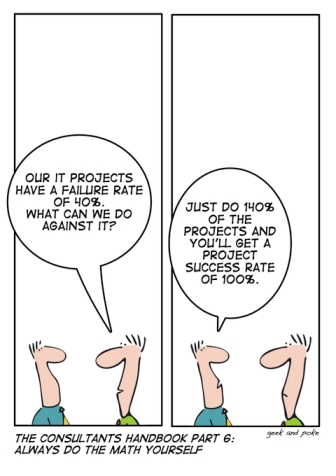(Abstract from Take Control of Your Project – Using Expectation Alignment to Avoid IT Project Failure by Terry Merriman, PCO Associates LLC)
Whether large or small, IT projects are complex change events. They need cross-functional collaboration between two or more departments or teams. Their success or failure reverberates throughout the organization and often impacts customers. Countless studies and papers on reasons for IT Project Failure cite two critical factors:
- Poor interpersonal communications
- Lack of professional project management
Numerous studies have shown that up to 70% of IT projects fail. Over 20 years, Terry Merriman and the other  contributors to the White Paper – Using Expectation Alignment to Avoid IT Project Failure continue to uncover the usual cast of suspects like:
contributors to the White Paper – Using Expectation Alignment to Avoid IT Project Failure continue to uncover the usual cast of suspects like:
- Customer requirements not being adequately defined
- Customer requirements kept changing
- Acceptance testing was slim to non-existent
These failure statistics are fully in line with the findings of the survey of 1072 business leaders and consultants summarized in my book Focusing Change to Win which I wrote with Kelly Nwosu.
How can that happen with professionals on both sides of the design effort? Weren’t they in the same meetings? What happened to the agreed requirements? testing regimens? and change request process?
Of course, they did all those things. What they didn’t realize is what they believed they understood of each other was at best misaligned. The IT professionals and the business professionals each assumed that the other understood the precise meaning with each communication; each assumed specific activities were part of the other person’s normal routine in a development project. So, projects failed to achieve the desired results due to::
- Expectations not being made specific to the project or explicit to each other
- Tasks not done as expected
- Delivered Functionality did not meet expectations
- Requirements weren’t met
If you are interested in having the authors speaking to your organization fill out this form.

 If we can analyse top performers and are able to develop those skills in others the pay-offs are often
If we can analyse top performers and are able to develop those skills in others the pay-offs are often